WHEN the young people behind the Seeding MY Hope campaign started “storming” the LRT on the afternoon of Aug 31, there were a lot of annoyed glances from their fellow commuters. But by the time they were done with their guerilla-style stunt, people were singing along with them to the tune of Rasa Sayang.
“I think it was a bit of a gloomy National Day to begin with but once the train party began, we started seeing a lot more smiles and it definitely brightened the day,” said Suemitraa Thiagarajan, 25, one of the eight student collaborators behind Seeding MY Hope. All eight are from KDU University College.
The train party was just the launch of the campaign, which hopes to encourage fellow Malaysians to share their hopes for the nation leading up to Malaysia Day.
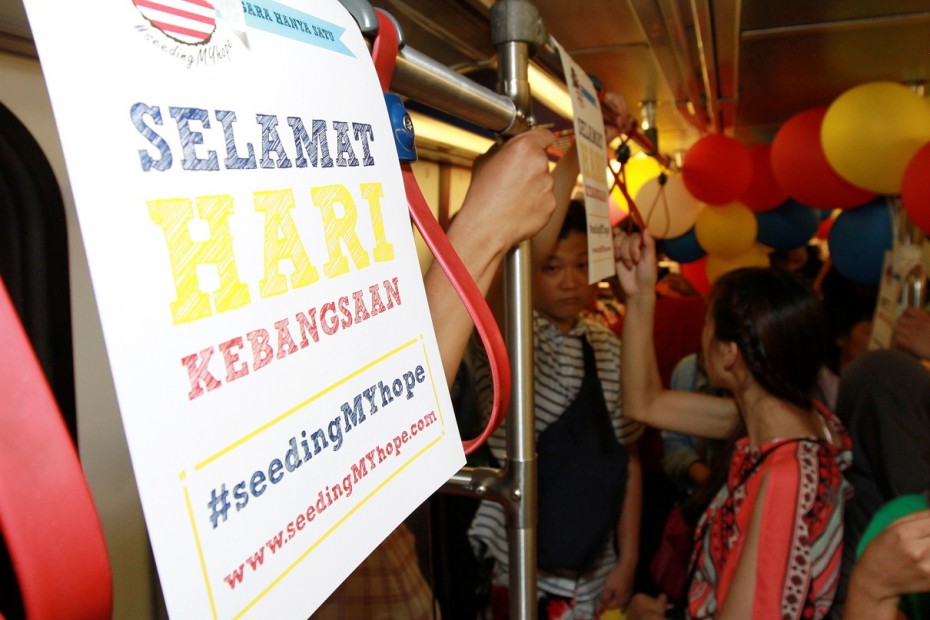
The trains were decorated with posters and balloons in conjunction with National Day. Photo: LOW LAY PHON/The Star
The campaign was conceptualised by the students and is being executed with the guidance of their lecturer, writer and educator Niki Cheong.
They kicked things off with around 40 volunteers gathering at the Bangsar LRT station, from which they boarded trains on different lines, decorating them with banners, balloons and posters before breaking out into song.
They also handed out mini jalur gemilang, badges and packets of mixed seeds to represent hope for the future of the country.
“We decided on the train party to try and bring the National Day spirit to the people,” said Suemitraa.
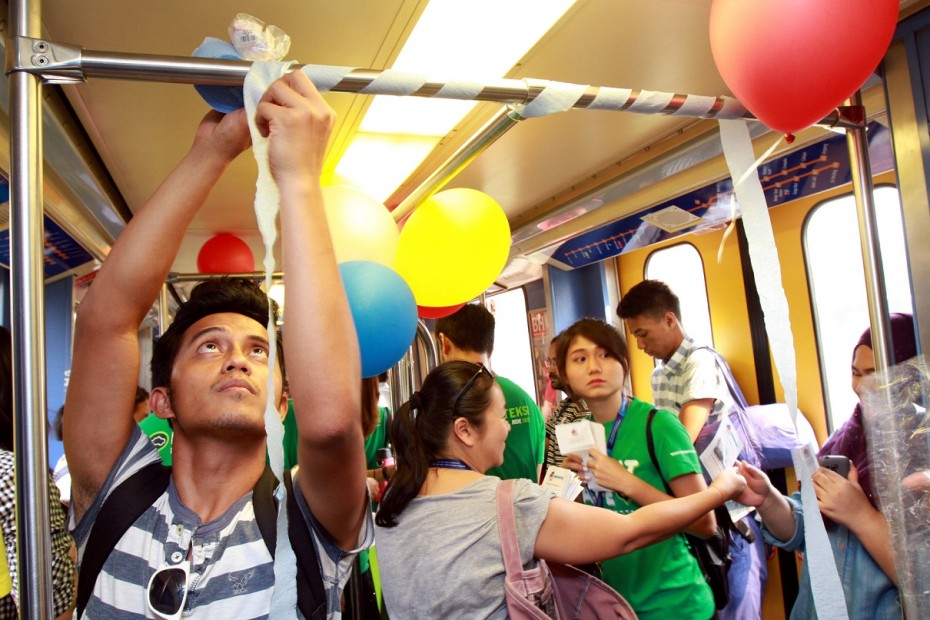
Organisers of campaign Seeding MY Hope decorate the coaches ahead of the train party. Photo: LOW LAY PHON/The Star
“The packets of mixed seeds, which the people can plant, symbolise us getting in touch with our tanah air while seeding hopes for the nation at the same time.”
Nichiren Tiruchellvan, 24, who volunteered to help with the train party, said: “I think this is a great way to launch the campaign. Some people seemed a little confused at first but once we wished them Happy National Day and handed them the mini jalur gemilang, they warmed up to us. Many even sang along with us!”
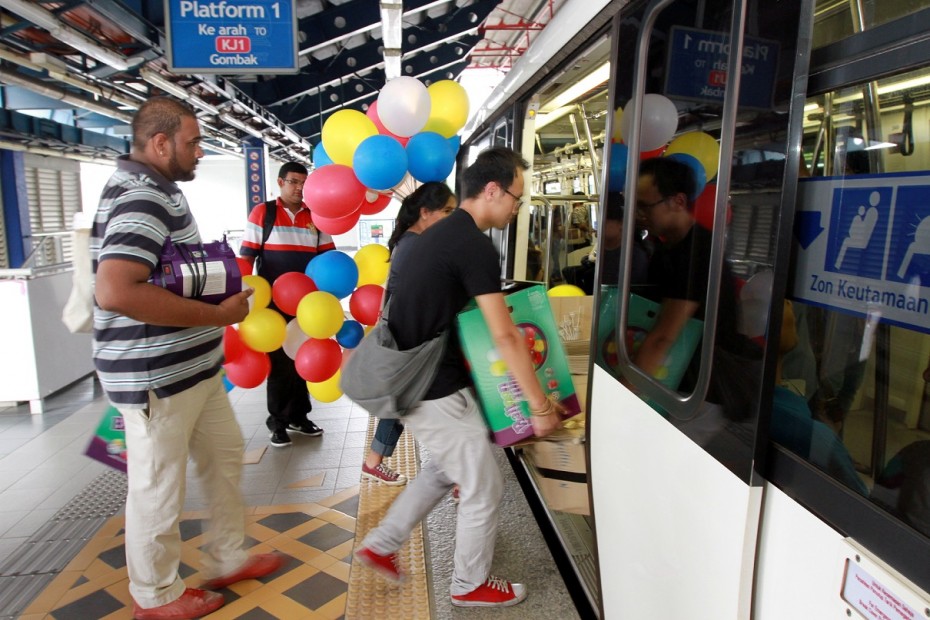
Participants load the trains with all sorts of goodies ahead of the train party. Photo: LOW LAY PHON/The Star
Leading the sing-alongs was singer-actress Chelsia Ng, who sang and played the ukelele to the tunes of Rasa Sayang and other original numbers.
Ng, who believes everyone should be proud of who they are, said: “I hope Malaysians don’t forget their roots. I am of Nyona descent and I like dressing in cheongsam as frequently as possible. Young people nowadays only wear it during special occasions and it’s sad that they are losing their identity.”
In the past, Cheong has worked with various content creators to organise similar campaigns such as 50X50 My Malaysia and Lima Puluh Tujuh to tell Malaysian stories.
But this time around, Cheong decided to work with his students.
“This year, the focus is on the future and on young people, which is why I wanted to make sure it was young people who crafted the project so it may better relate to their peers,” said Cheong.
“Personally, I feel very lucky and honoured to have been selected to participate in this campaign,” said student collaborator Zakiy Rahim Hisham, 22.
“The vibe in the country hasn’t been that good in recent times and although we’ve been receiving lots of positive feedback so far, I hope everyone helps by going on social media to share their hopes for Malaysia using the campaign’s hashtag, #SeedingMYHope.”
#SeedingMYHope messages – tweets, Instagram photos, videos and more – are being compiled on the campaign website, seedingmyhope.com.
Dylan Tan, 21, also a collaborator on the project, hopes all Malaysians will be able to work better together.
“Although we are all from different races and backgrounds, I believe we have similarities that lie uncovered. As long as we focus on our similarities, we can stand tall and united,” said Tan.
The second phase of the campaign will see a capsule going out to collect soil from all 13 states of Malaysia. There will also be an art installation at Pavilion Kuala Lumpur, starting Sept 12 and ending on Malaysia Day, where the capsule will be displayed.
The public will have the opportunity to pen down their hopes for the nation as well as plant seeds into the soil within the capsule.
“There will also be a video feed displaying stories by us, the eight students, on our hopes for the country, as well as pictures and videos people have posted on social media using our hashtag,” said Suemitraa.
To find out more about the campaign, and to see the messages of hope posted there by other Malaysians, go to seedingmyhope.com.

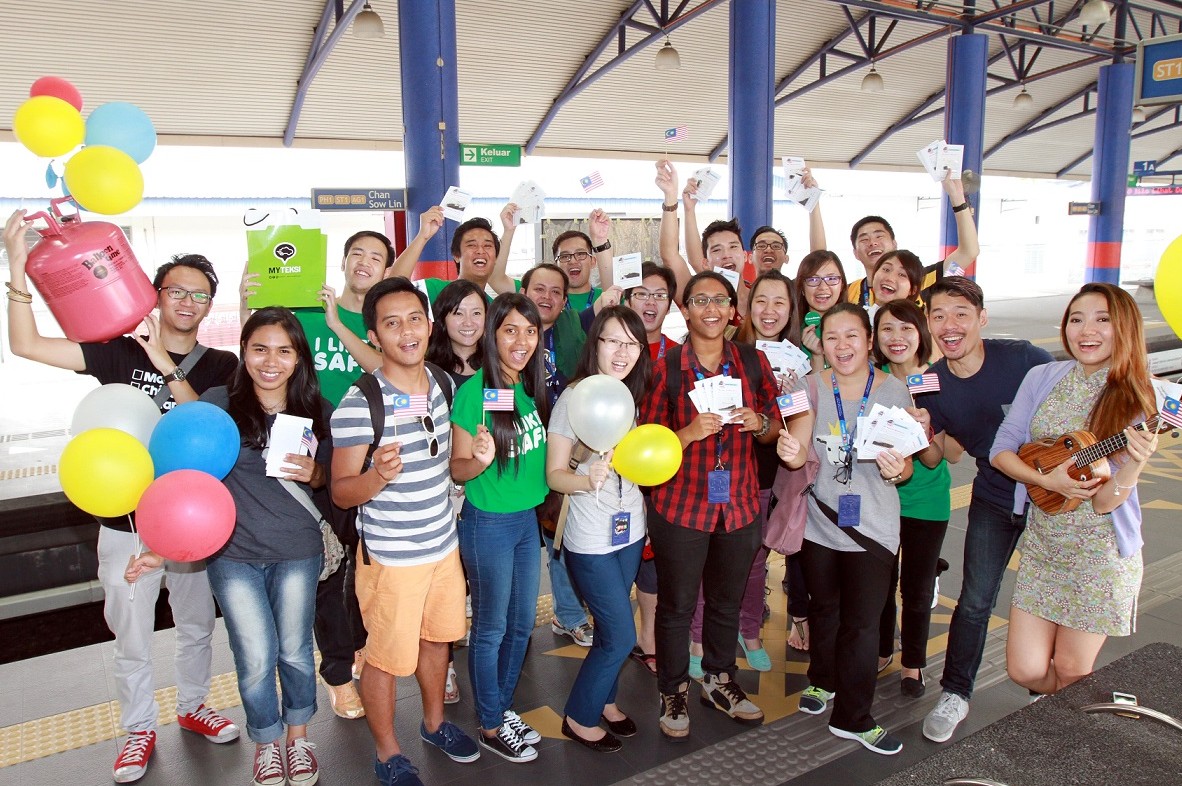
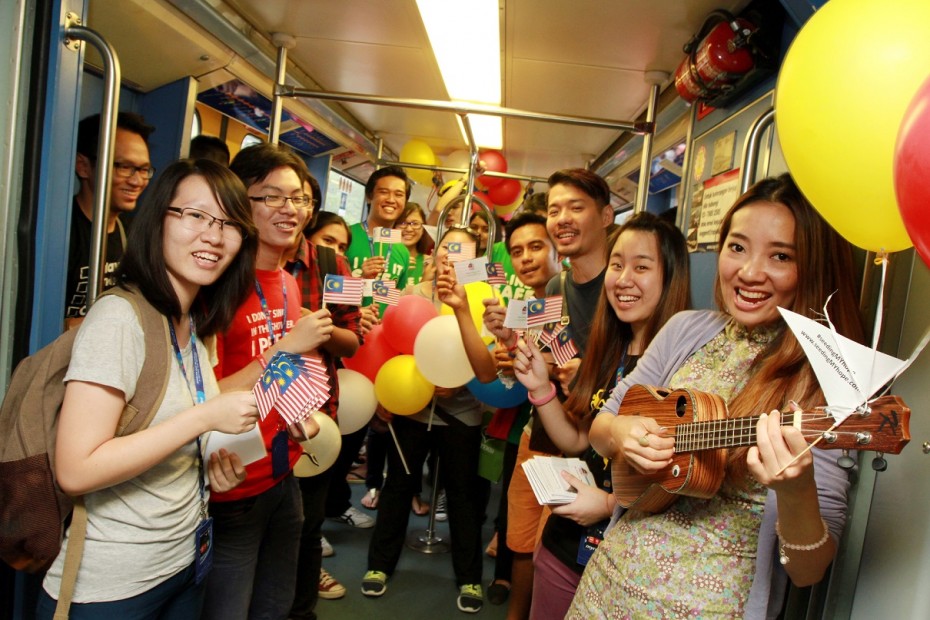





Tell us what you think!